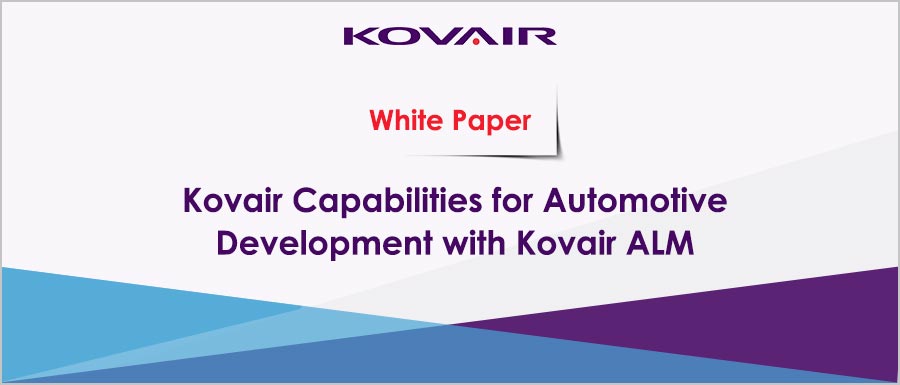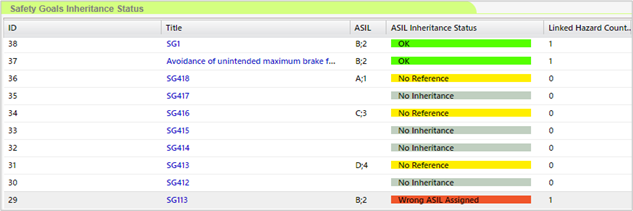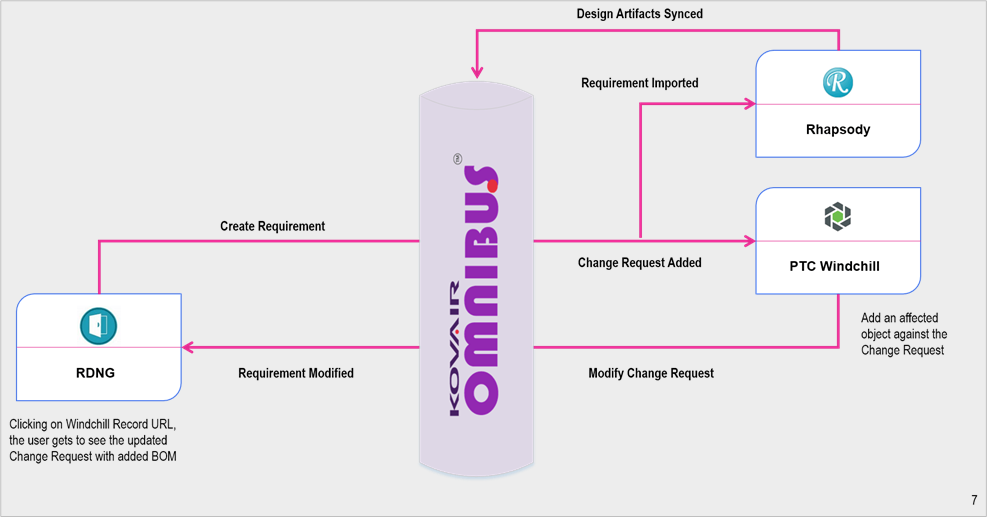Introduction
Today’s automotive products have become extremely complex. Automotive engineering demands the use of modernized tools in designing of its development processes for creating such products. Focus has shifted from just the development of hardware components to software driven electronic components in automotive products. Software in vehicles has become the most important source of innovation, also making it the biggest source of challenges and complexity.
Autonomous Driving
Nowadays, majority of the new cars are connected to the cloud, to other cars or to users’ devices. The never-ending innovations in the field of assisted driving and driverless cars are adding more sophisticated and complex software to the development cycle. This autonomous technology, in the automotive domain, is expected to bring great dimensions in shaping the future of this industry. Most innovative research & development today is already focused on enabling self-driving transport, which is expected to redefine the mobility sector completely. The sheer number of sensors needed, plus their interdependencies in (ADAS) solutions are already gradually seeping down into everyday vehicles.
The Safety Factor and Norms
Talking about self-driven vehicles, safety is of utmost importance because lives and reputations are at stake. Functional safety is part of the overall safety of a system or piece of equipment that depends on automatic protection. This automatic protection system needs to respond correctly to different human errors, hardware failures, and operational/environmental stress by implementing proper. safety standards.
Automotive companies are trying to introduce all reasonable measures to satisfy system safety objectives during the development of their products. Norms and processes have evolved over the past several years, such as the International Organization for Standardization ISO 26262 functional safety standard for electrical and electronic systems, as well as the Capability Maturity Model Integration (CMMI) and Automotive SPICE (Software-Process Improvement and Capability Determination) process assessment models, intended to ensure automotive safety and avoid the defects that lead to recalls in the first place.
Need for a Tool
Automotive companies are making huge investments towards the improvement of their processes and to map those to the norms. Organizations are looking for better tools to overcome the limitations of their legacy systems.
Kovair Automotive Template
Kovair Automotive template addresses all the above challenges and is undoubtedly a great choice. With its centralized repository based integrated and collaborative platform, Kovair Automotive template ensures smooth communication and data exchange among disparate development teams and helps the stakeholders with capabilities and information they need to operate in the highly complex automotive ecosystem. It comes preconfigured with entities and workflows, enabling users to develop automotive products, adhering to ISO 26262 and ASPICE regulatory standards. Kovair, with its task-based workflow management features, end to end traceability relationships among the artifacts, review module for approval over a collaborative environment, and built-in Test Management, Defect management and Risk Management functionalities makes it an obvious choice for the automotive companies across the world. Apart from this, it helps to accelerate compliance audits by providing advanced reporting functionalities and analytics.
Kovair’s Automotive template comes with pre-configured modules such as
- Hazard Analysis and Risk Assessment
- Risk Management
- Requirements Management
- Deign Management
- Test Management
- Defect Management
- Change Management
- Project Management
- Release Planning
- Task and Timesheet Management
Business Benefits
With these pre-configured modules, some of the major business benefits that it offers are:
- Accelerate Functional Safety compliance for ISO 26262, with an integrated, 100% browser-based collaborative platform and task-based workflow.
- Complete coverage to perform Hazard Analysis and Risk Assessment as per ISO26262 covering
- Hazard Identification
- Hazard Classification
- Automated ASIL Determination
- Safety Goal Determination
- Functional Safety Concept
- Safety Requirements Specifications
- Gain complete visibility for the entire development lifecycle and simplify decision-making with end-to-end traceability, real-time customizable reports & dashboards.
- Make audit preparations hassle free and efficient at reduced costs through continuous compliance with ISO 26262.
- Ensure alignment across product and engineering disciplines through ALM-PLM integration.
- Manage risk recalls, and compliance guidelines centrally and transparently
- Track and manage product and process quality targets
- Provide real-time visibility on product status
- Leverage risk management capabilities
- Out of the box integration with 110+ tools from areas of PLM, ERP, CRM, PPM & ALM solutions through proprietary enterprise service bus – Kovair Omnibus.
Features of Kovair Automotive Template
Some of the salient features of Kovair Automotive template are:
Hazard Management and ASIL Determination
Kovair’s HARA (Hazard & Risk Analysis) Management allows to identify various hazards depending on the malfunctions of the items and driving scenarios, and to classify them by assigning appropriate Severity, Exposure and Controllability. Depending on these, the system automatically calculates an ASIL number and an ASIL flag for that Hazard as per the standard ASIL Determination formula.
This increases the efficiency and precision of ASIL values as it is auto calculated using the calculated field and business rule features of Kovair ALM.
Requirements Management
Kovair Requirement Management helps gather and manage various types of requirements over a browser-based platform for collaborative Requirement analysis, review and change control. It ensures correctness of requirements implementation through task-based workflow, built-in modeling, and review module. Kovair’s built in versioning and impact analysis capabilities help track the who, when and what of changes for audit, compare the changes between versions of requirements. The traceability chain connecting the Requirements to Architecture to Design to Tests ensures complete visibility across functional, system, test and other relational coverage. It can be integrated with best of breed tools and formats – ReqIF, JIRA, IBM Rational DOORS Next Gen, Enterprise Architect, Rhapsody, Matlab Simulink, LDRA, round-trip export-import with MS Excel and Word, and many more.
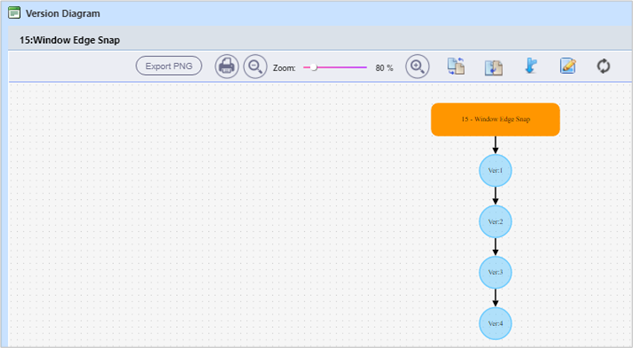
Version Diagram
Traceability and Impact Analysis
Kovair Automotive Template comes with complete traceability across various artifacts to ensure safety measures are taken at every level, every requirement is covered with appropriate tests and defects, if any. This also allows users to do a proactive impact analysis based on these relationships. This traceability can be viewed in different ways such as Traceability View, Relation Diagram and Traceability Matrix.

Traceability View

Analyze Impacts
Audit trail
Kovair Automotive solution captures the complete audit trail of who, when, what of every change that happens in the application making it easy for detail level audit.
Test Management
Kovair offers integrated Test Management that allows to create and manage tests using Kovair Test Management and/or integrated tools. For every requirement maintained on the left side of V model, users can maintain a corresponding test artifact. It establishes Requirement Coverage by creating test cases based on requirements. It analyzes change impacts on test artifacts with respect to change in requirements and monitors test coverage in real time by executing test cases manually or automatically. It also allows execution of QTP or Selenium Test scripts directly from Kovair and viewing the test automation results. It has no dependency on external tools or tool configurations for tracking results of entire test suite. On failure of a Test Execution, it supports automatic creation of Defects.
Defect Management
Kovair’s Integrated Defect Management allows to identify, organize, categorize and view defects across projects in a centralized repository and supports attachment of files directly from the Cloud without having to save them in local drives before uploading. Using the power of Kovair Workflow engine, an automated Task based workflow can be designed that will take each Defect through a series of automated Tasks done by the respective owners right from the inception of the Defect to its resolution. It provides traceability links with Test artifacts and Requirements. It allows to automatically create defects from failed test cases. It distinguishes defects from change request or enhancement and automatically assigns defects to developers for fixing based on custom policies. Using notification policies, it sends automated notifications to teams assigned for defect fixing and monitor defect resolution status in real time to improve prediction on quality. Kovair Defect Management can be seamlessly integrated with other Defect Management tools like JIRA, Bugzilla, TFS, RTC through bidirectional integration using Kovair Integration platform which are all currently available off the shelf from Kovair Omnibus pool of Integration Adapters.
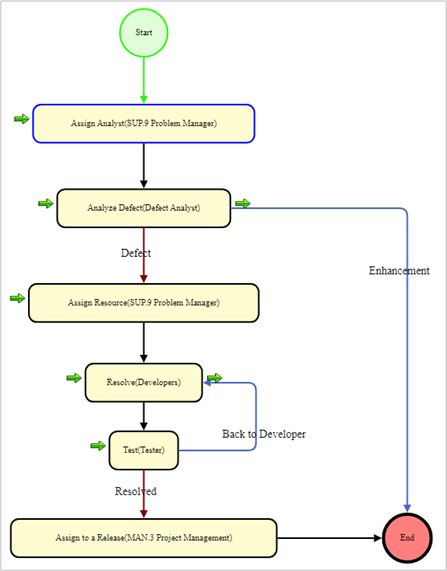
Risk Management
Kovair Risk Management allows to identify, organize, categorize and view risks in a centralized repository and track them based on severity, likelihood, submitter name, risk owner and status. It monitors and manages risks relating to the upstream and downstream artifacts and ensures end to end traceability across all lifecycle artifacts. It helps to perform risk analysis early and continuously throughout the development process and provides real time risks information instead of getting confused in static and scattered documents or spreadsheets. Using risk and hazard analysis, you are ensured that all existing risks are covered with proper mitigation.
Visual Monitoring through Reports and Dashboards
Kovair Automotive template comes with a wide range of customizable graphical and textual reports. The reports are created using simple mouse-clicks using the data from different entities defined to manage the different lifecycle phases. These reports can be included in different gadgets in various visual dashboards. Multiple reports can be included to organize a Dashboard.
A Dashboard can be assigned to multiple users and at the same time a user can have access to multiple dashboards depending on the privileges and access rights. Each report has drill down capabilities to monitor the KPIs and provide support in the decision-making process.
Kovair ALM Platform Capabilities
Portfolio and Project Management
Kovair PPM is a one stop solution that provides a unified platform to manage resources, schedule, budgets, and actuals through a single interface. Kovair PPM delivers greater value to organizations by connecting planning to execution. It enables IT leaders to optimize their project portfolios, manage the capacity of resources against the demands raised from different projects, and connects plans and resources to the actual project execution. Using Kovair PPM, organizations can define strategic initiatives to portfolio to projects to their outcomes. It allows to define strategic initiatives, choose the relevant projects for execution, provide deeper insights into development, projects, and programs by generating EVMs at all levels, providing valuable inputs to the management, enabling them in making data-oriented decisions.
Omnibus Integrations
Kovair Omnibus Integration technology with its SOA based proprietary ESB architecture integrates and orchestrates best-of-breed, open source, legacy and homegrown tools. It helps to achieve an integrated ALM through plug-n-play based integration, currently with 110+ software tools belonging to different domains like ALM, ITSM PLM, ERP and CRM based on the APIs exposed by the tools. It also provides APIs for extending Kovair with custom interface thereby connecting different Teams, Processes and Tools for achieving success through better real-time collaboration. As it is easy to integrate any type of software tool of an organization, organizations find a good opportunity to continue using their existing tools in an integrated setup. Saves money as well as time for achieving cross tool data-based reports, dashboards, and end to end traceability.
The following picture shows the off-the-shelf adapters that Kovair has for the 110+ tools

Out of the box integrations
ALM – PLM Integration
Kovair PLM-ALM Integration solution aims to combine the best of PLM and ALM; and other participating enterprise systems like ERP to provide a synergetic, integrated, and connected environment. Kovair, through its flagship product Omnibus as indicated earlier has built robust integration capabilities with product lifecycle management (PLM) tools for some of the industry’s leading PLM platforms like PTC Windchill, Siemens Team Center and Aras Innovator with others to follow. It also has integration available with key CAD tool like CAMEO. Through bi-directional seamless integration capability, many of the popular ALM (application lifecycle management) tools like IBM Rational Family, Micro Focus ALM, Microsoft Azure DevOps, JIRA, CA Rally, Polarion and GitHub can be connected to leading PLM platforms or other CAD tools.
Kovair PLM Adapters for PTC Windchill, Siemens Team Center and ARAS Innovator help connect with the best-of-breed ALM tools, thereby enabling users to track inherent PLM components namely WTParts, Documents, ECR, ECNs from within the application lifecycle management (ALM) Tool interface.
Kovair has a highly configurable process automation engine to implement a wide range of methodologies. It is the only product in the market today to have a Task based process automation enforcing central governance spanning across different phases of project lifecycle for multiple functions concurrently.
Talking about its key features,
- Allows implementation of governance across all phases of project lifecycle through web-based configurability over a graphical editor, like drawing a Visio diagram.
- Eliminates manual handoffs between teams in conjunction with tasks and notifications
- Supports conditional branching for parallel activities
- Supports Delay and Wait nodes for cross phase communication
- Provides behind the scenes graphical display of the progress of workflow
- Allows users to do a prototyping of the designed workflow before publishing
- Supports full workflow edit capabilities during runtime if needed
Configurability
Kovair does not restrict you to change your way of working in order to abide by the configuration of the tool you use. It provides a fully configurable platform to define and configure your solution as per your existing working model as they are being followed in your organization. With the unique capability of creating different entities and defining relationships between them, it allows you to create a wide range of business solutions through codeless configuration using simple mouse clicks. Such configurability does not require any scripts or code to be written, rather can be achieved by the end users only after a few hours of training.
Conclusion
Kovair Automotive template helps to avoid costly overruns and reduce rework in the delivery of digital mobility solutions – all in a single web-based platform! Use this template to cut the time and costs of developing high quality automotive products. In Kovair’s opinion, this template and its ALM platform are one of the most comprehensive solutions for the auto industry.
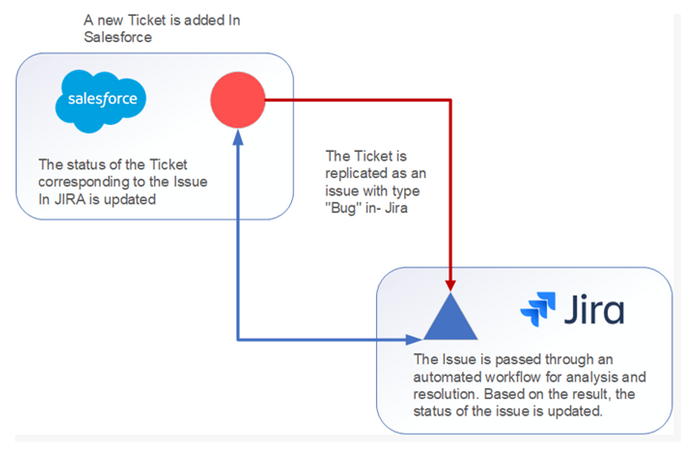 Fig: Integration between Salesforce Lightning and JIRA
Fig: Integration between Salesforce Lightning and JIRA


